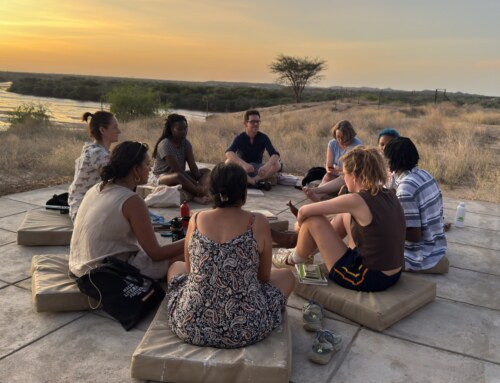Our last week at TBI was an eventful one, with a lot of things to finish up before we packed up and came back home. We took a trip to Central Island, learned a great deal about human evolution, visited an important paleontological site, and had a goat roast. After a restful day last Saturday, we left TBI early Sunday morning to cross the river and head to Kalokol, a town about an hour and a half north of TBI. Once we got there, we checked in with the local KWS (Kenya Wildlife Services) station to see if the lake was calm enough to safely cross it, and then chartered two boats to take us to Central Island.
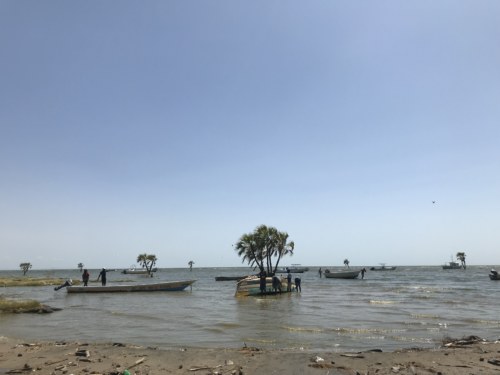
The harbor at the Kenya Wildlife Services station (Photo Credit: Lydia Myers)
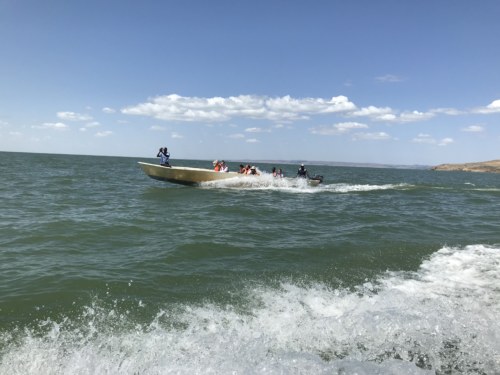
One of our boats on the green waters of Lake Turkana. (Photo Credit: Lydia Myers)
We spent the day at the island, which is actually a dormant volcano in the middle of Lake Turkana, formed by the same rifting action that is pulling eastern Africa away from mainland Africa, and caused the lake and the Turkana Basin to form. The island has three small lakes within it, two of which we visited. The first lake we went to was called Flamingo Lake, because it hosts thousands of flamingoes that live around the lake and eat brine shrimp and blue-green algae, which in turn keep their feathers pink. It was a steep hike up the side of the ridge, but it was worth the view we saw from the top of hundreds of flamingoes clustered around the edges of the smaller lake inside the crater.
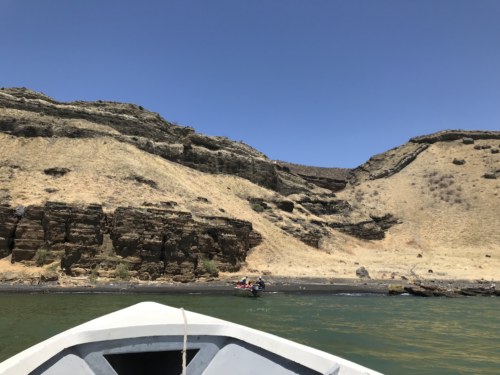
Arriving at our first stop, Flamingo Lake. (Photo Credit: Lydia Myers)
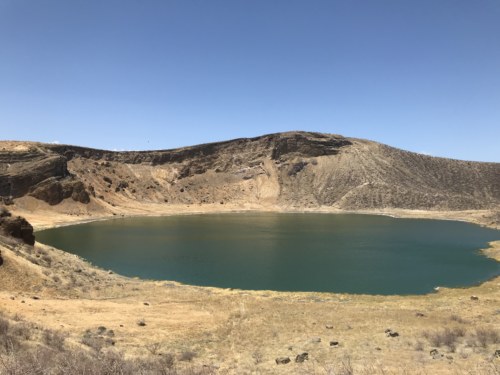
A view of Flamingo Lake, formed in the collapsed crater of the dormant volcano. (Photo Credit: Lydia Myers)
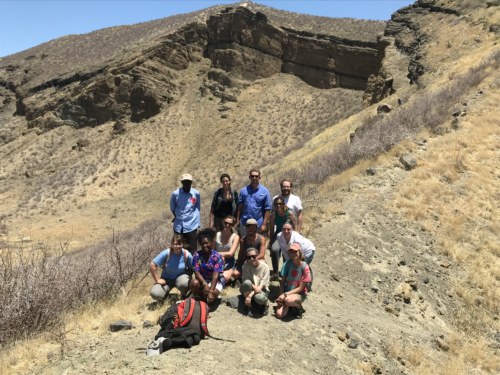
Our group at the Flamingo Lake lookout. (Photo Credit: Lydia Myers)
After Flamingo Lake, we went over to the trailhead for a small hike to another lake, and ate lunch. After lunch, we hiked up to the second lake, called Crocodile Lake, because it holds one of the world’s largest breeding grounds for Nile Crocodiles. We looked from a safe distance to see if we could spot some crocodiles, but there were none in sight that day. It was still an interesting view, the lush flora being different from most of the things we had seen in Turkana so far. After this, we hiked back to the boats and had a smooth ride back to Kalokol, and came back to TBI for dinner.
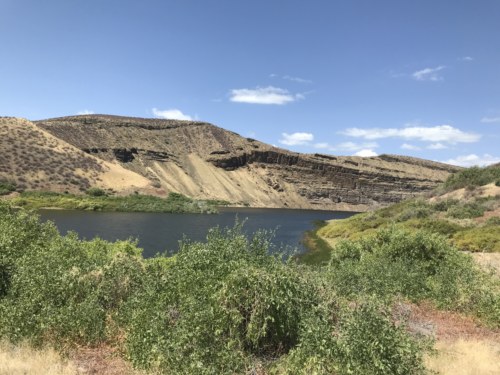
Crocodile Lake. (Photo Credit: Lydia Myers)
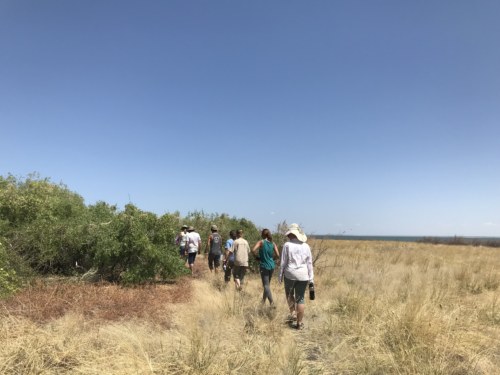
Hiking to a better vantage point of Crocodile Lake. (Photo Credit: Lydia Myers)
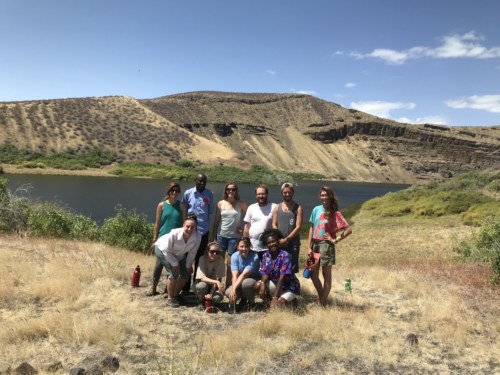
Our group with Crocodile Lake in the background. (Photo Credit: Lydia Myers)
Most of the rest of the week was spent in the classroom with Dr. Lewis finishing up lectures for the Human Evolution module. We had a final exam Thursday afternoon, and had free time afterward, with some students deciding to go down to the river and swim. Friday morning, we were guests on an excursion to the Napudet hills with Dr. Isaiah Nengo, a paleontologist at TBI. We hiked to a very important paleontological site, where Dr. Nengo and his team discovered a juvenile ape cranium from 13 million years ago, called Alesi. Close to where the fossil was found, there is also a remnant of a forest from the same time period. A number of fossilized tree trunks, still in the same position they stood in millions of years before, are exposed in the side of a hill, with many small fragments of fossilized wood also being apparent around the landscape. After seeing the site, we hiked back to the lorry and went back to TBI for lunch.
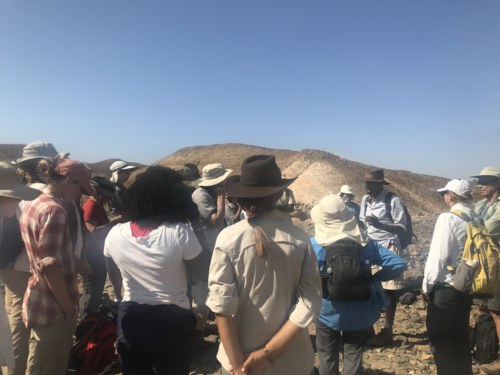
Dr. Isiah Nengo describing aspects of the Napudet site. (Photo Credit: Lydia Myers)
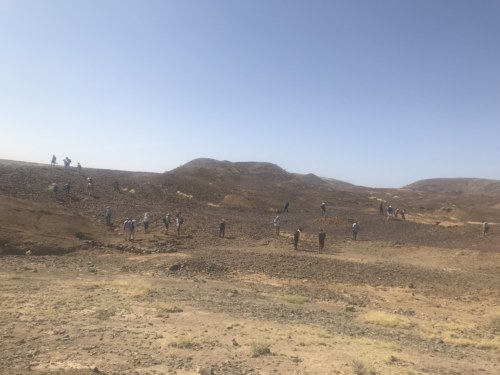
Looking for fossils at Napudet. (Photo Credit: Lydia Myers)
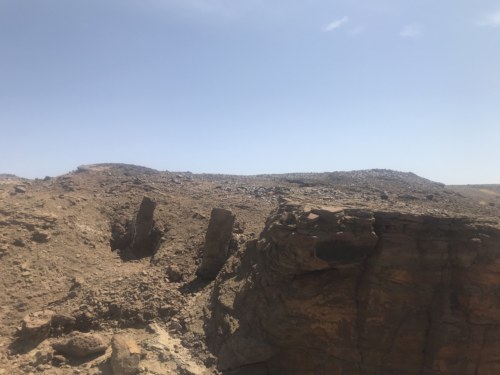
Fossilized tree trunks at Napudet. (Photo Credit: Lydia Myers)
After lunch, the students had an opportunity to participate in an annual tradition at TBI, the goat roast. They were taught how to butcher a goat using the stone tools they made at Lomekwi, employing similar techniques their ancestors would have used hundreds of thousands of years ago. After the butchery, the goat was set aside to be roasted for our meal later that evening. In the meantime, we had a graduation ceremony to honor the end of our field school. Dr. Lewis shared some remarks with us, and then all of the students received diplomas from TBI. Dr. Nengo also gave us a speech later than night, just before we ate our delicious roasted goat and went back to our rooms to pack up all of our things.
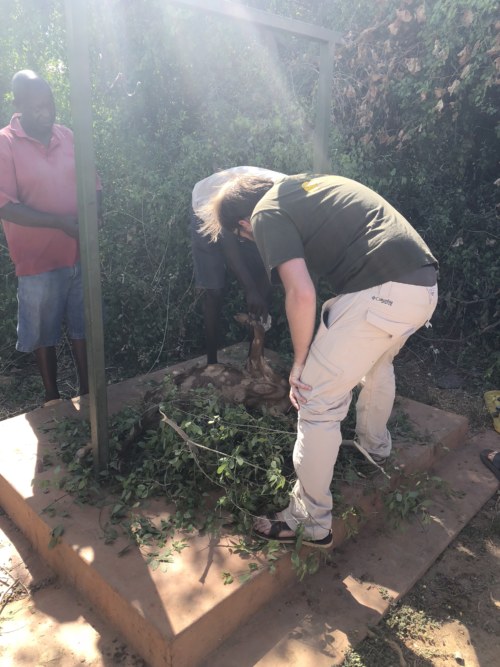
Harrison helping with the goat butchery. (Photo Credit: Jessica Manson)
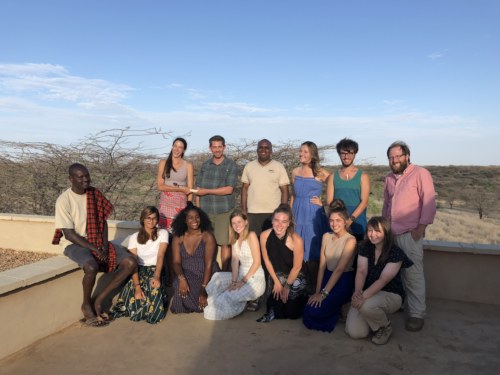
Our group after graduation. (Photo Credit: Lydia Myers)
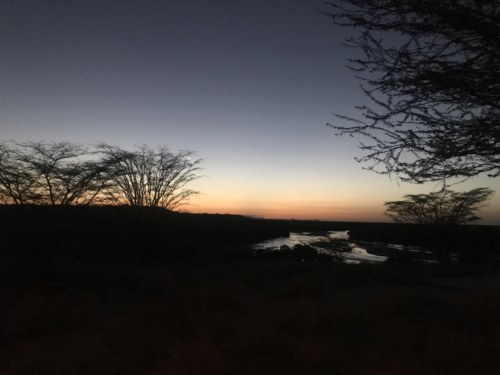
One last TBI sunset. (Photo Credit: Lydia Myers)
We left TBI early on Saturday morning for Nairobi, had lunch in the city and then went to the Jomo Kenyatta airport to get on our flight back to New York. It was an amazing and life-changing six weeks, and I know I’m not just speaking for myself when I say that the experiences gained and the friendships made since July will stick with me for the rest of my life. We hope each of the students has a chance to come back to TBI in the future, but until then, asanteni sana and kwaherini!
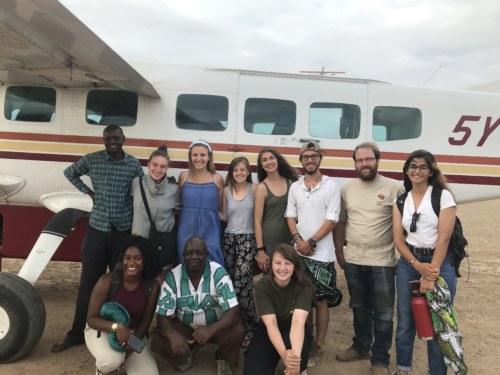
Our group just before we left on the TBI plane. (Photo Credit: Lydia Myers)
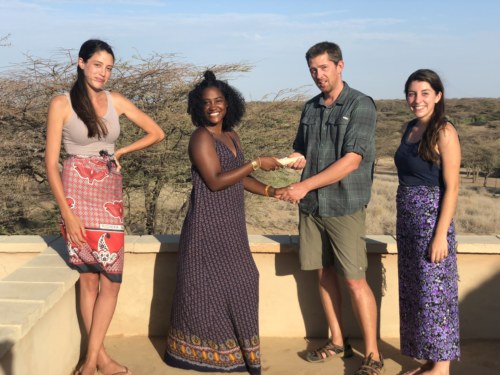
Keyly graduating. (Photo credit: Grace Calhoun)
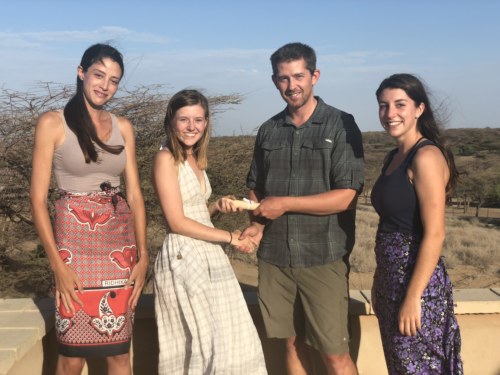
Abigail graduating. (Photo credit: Grace Calhoun)
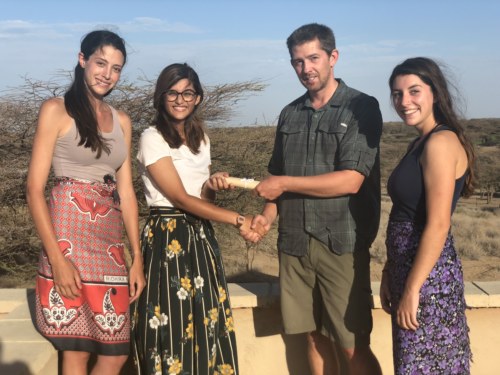
Samar graduating. (Photo credit: Grace Calhoun)
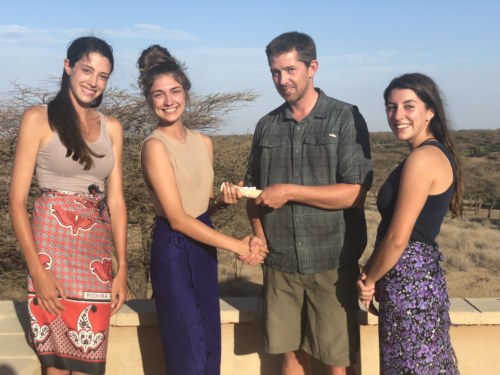
Jessica graduating. (Photo credit: Grace Calhoun)
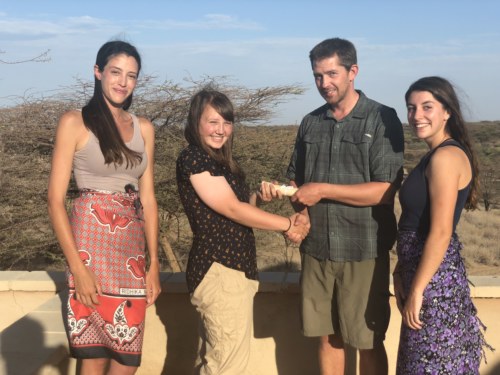
Kristen graduating. (Photo credit: Grace Calhoun)
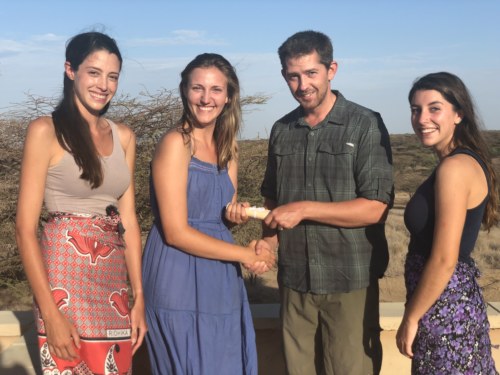
Lucia graduating. (Photo credit: Grace Calhoun)
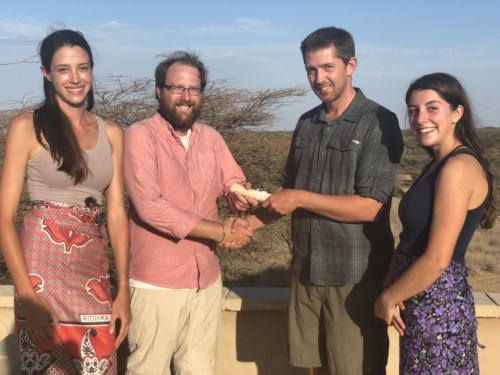
Harrison graduating. (Photo credit: Grace Calhoun)
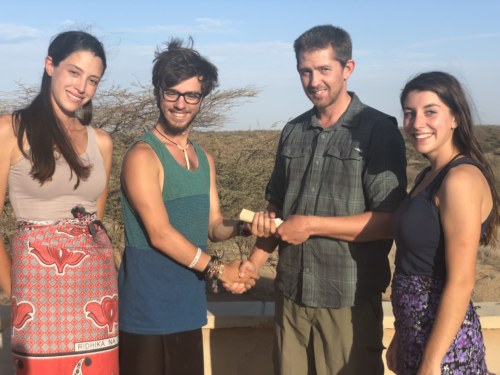
Ian graduating. (Photo credit: Grace Calhoun)
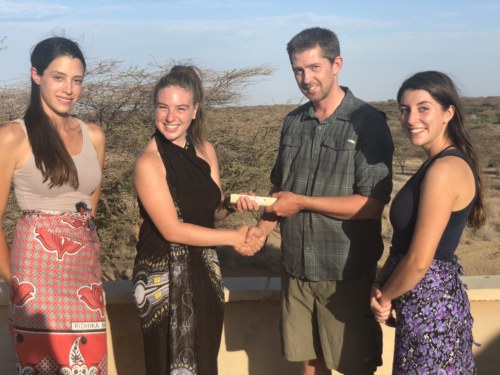
Grace graduating. (Photo credit: Lucia Muzzarelli)

